-
 2098 Hits
2098 Hits
-
 82.48% Score
82.48% Score
-
 15 Votes
15 Votes
|
|
Mountain/Rock |
|---|---|
|
|
39.72241°N / 21.63095°E |
|
|
Trad Climbing |
|
|
Spring, Fall, Winter |
|
|
2297 ft / 700 m |
|
|
Overview
Kumarieskopf
The route Härtetest on Kumarieskopf is definitely one of the best rock climbing destination in the Meteora (Μετέωρα) area, located in the Thessaly region of Greece. Not to be missed! Kumarieskopf is an obvious rocky pillar located to the left of the famous Holy Ghost (or Aghion Pnewma in Greek) and to the right of the adjacent Kaukasier Tower. The structure, which essentially is a North-Eastern shoulder of the less showy Kumaries Towers is very well individualized and clearly visible from the road Kastraki - upper monasteries of Meteora.
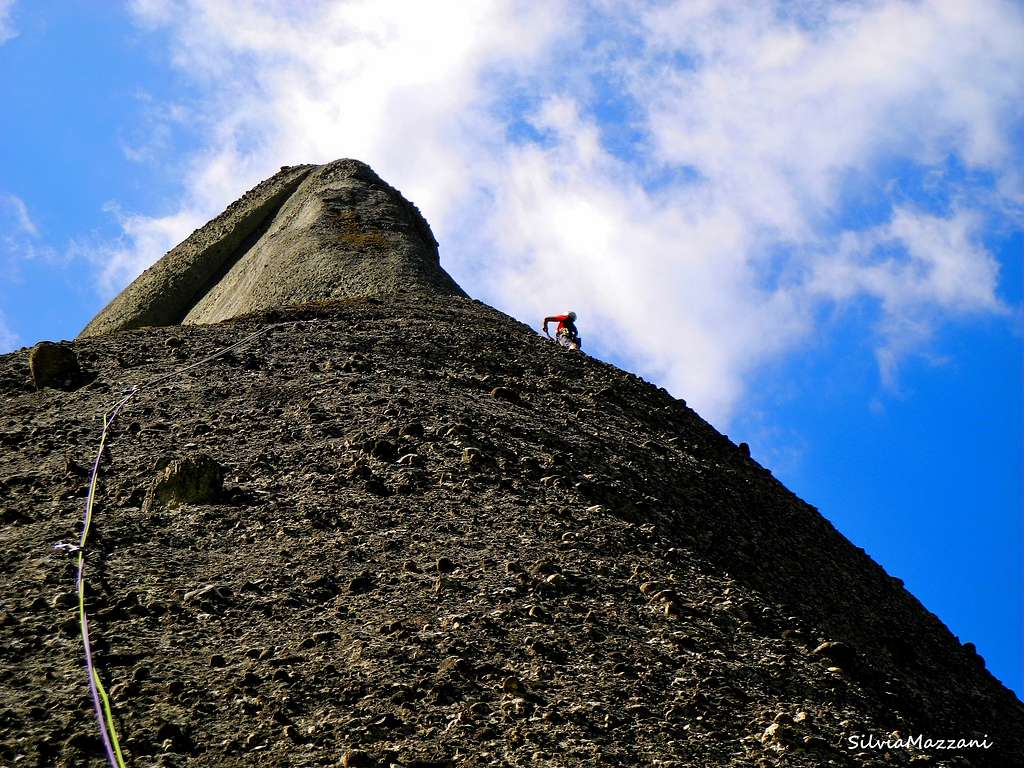
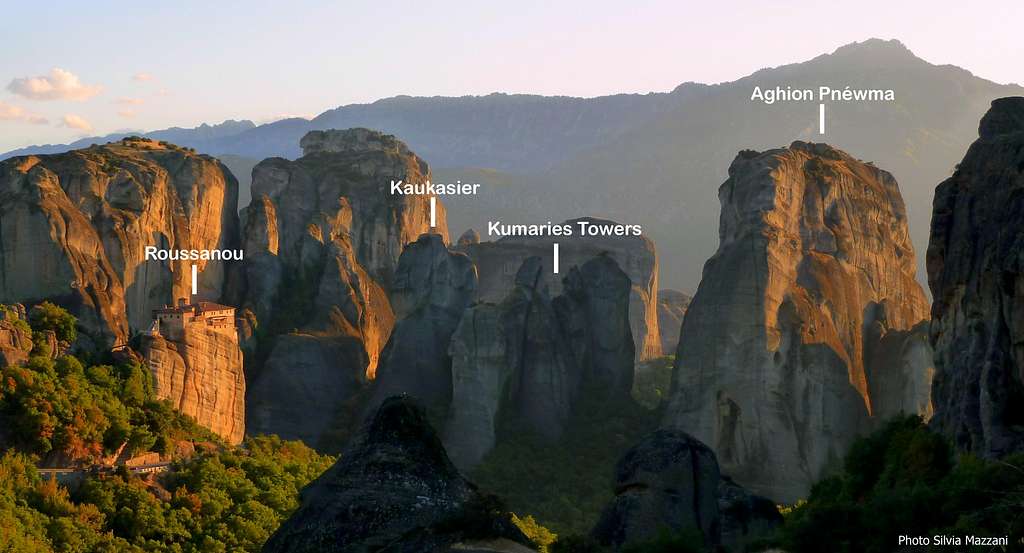
The name Meteora - meaning "hanging in the air" - probably refers to the spiritual, intriguing and misterious atmosphere surrounding the place and more concretely to the vertiginousness of these rocks, which are about 170 in number, in the form of spiers, towers, pinnacles, peaks and massive summits. Each of these peaks is reachable exclusively by climbing, having a real summit without any easy access. The rocks overlook the inhabited centers of Kastràki and Kalabàka and feature about 850 multi-pitch and single pitch routes. Due to their singularity and a bit of mistery surrounding the place, in addition to the presence of various monasteries, the towers of Meteora are quite famous all over the world.
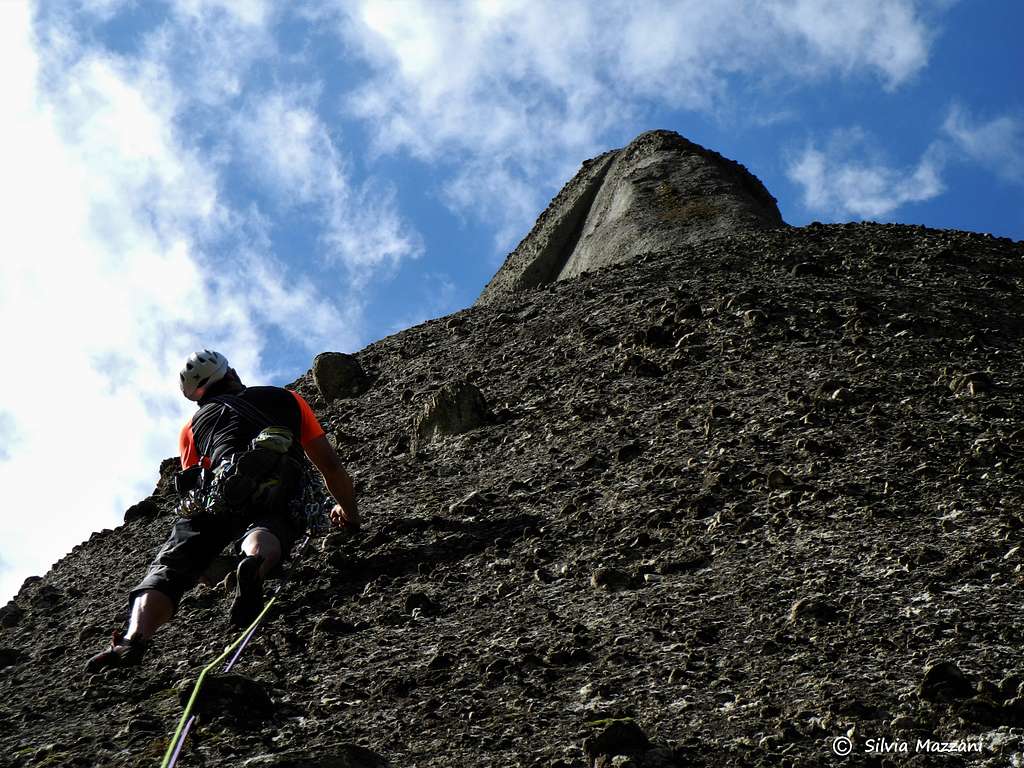
Getting There
Meteora is situated in the Thessaly region of Greece, Northern half of Greece, approximately 25 km NNW from Trikala, and immediately North of Kalambaka and Kastraki, the two main towns in the area, both located very close to the rocks. The closest main town is Larissa. The distance to Kalambaka is about 360 km from Athens and 237 km. from Thessaloníki.
By plane - Meteora can be approached from Athens Eleftherios Venizelos airport or from Thessaloniki airport. From these airports you can:
- take a domestic flight to Larissa (about 85 km from Kalambaka)
- rent a car, useful once you are in Kastraki, but not essential
- use public transports (bus or train). Getting to Meteora without a car is easy thanks to the train from Athens that stops in Kalambaka.
By ferry from Italy – If you wish to travel with your own car, there are different shipping companies and many ferries departures to Igoumenitza from the harbours of Ancona, Bari and Brindisi.
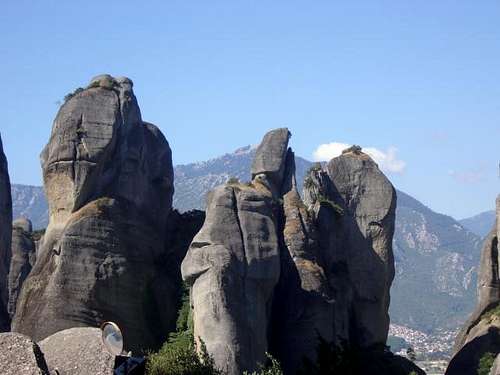
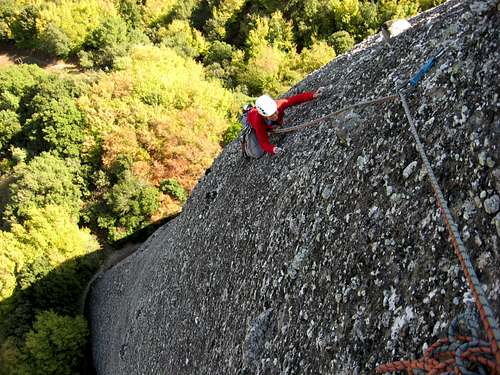
Härtetest route report
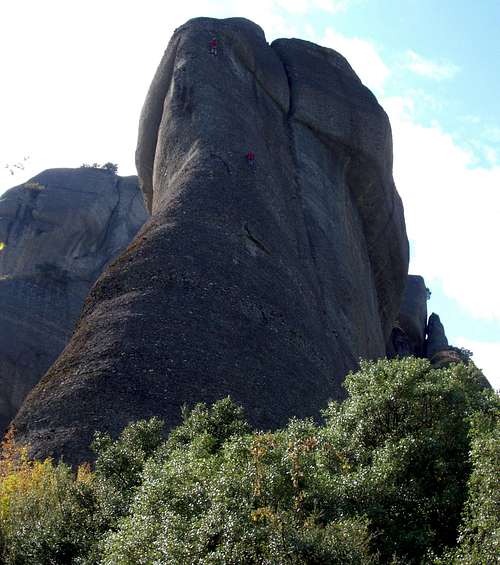
Härtetest (UIAA scale)
A superb climb! A route of 4 lengths that offers wonderful climbing and a challenging third pitch. Not to be missed!
Approach
When driving from the village of Kastraki towards North - to reach the summit monasteries - you soon see the rounded peak of the Doupianifels on the left near the road and just in front on the right the Aghion Pnéwma (recognizable for the niches with flags in the middle of the wide wall) and Heiliggeistwachter (a minor spire resting on the wall of Aghion Pnéwma). After a bend towards right, the road passes a pull-out on the left. Continue driving and reach a little pull-out located higher up in front of the Kumarieskopf and the adjacent Kaukasier. Park the car and take a path descending to the bottom of the long valley which runs along the road on the right. Briefly rising in the small wood reach the base of the fine tower and the start of the route of the route located on the left of the wall clearly visible from the road near the North East ridge.
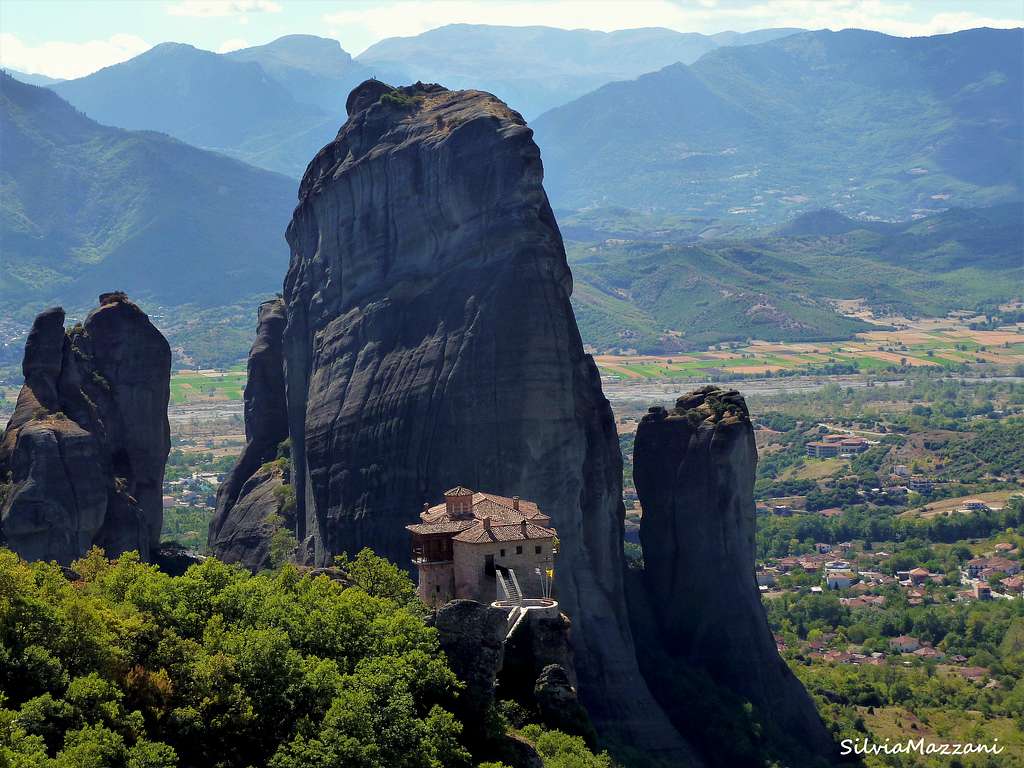
Report
L1 - Attach the steep basal wall directly to the left of the North-East ridge line, then oblique to the right to the stop, V, 30 m
L2 - Climb directly, then again obliquely to the right to the stop on the right of the ridge, V +, 25 m
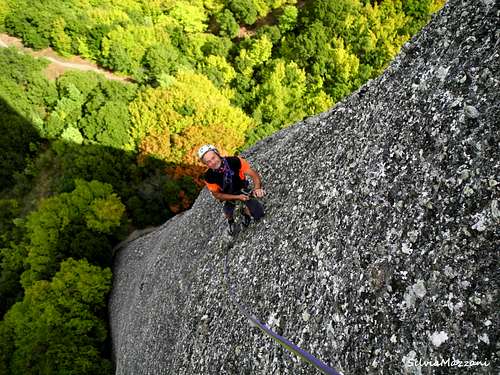
L3 - Crux length. Climb up the vertical wall slightly obliquely to the right, then directly and finally to the left, returning to the ridge. Exceptional climbing. VI+, 25 m
L4 - On easier terrain climb along the main ridge, then with a last more difficult move to the summit, V-, 20 meters. Summit book
Descent
Abseiling down the same route (40 m + 50 m + 30 m)
Red Tape
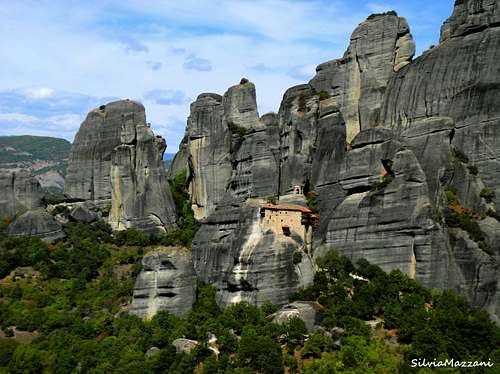
No fees and no permits required. Anyhow, if you are visiting this area, remember not to climb on rock formations with inhabited monasteries. In the Seventies Dietrich Hasse and his team decided, in agreement with local authorities, not to climb any route on these latter rock formations. This rule applies even today. Please preserve all other historical remains. Another important suggestion is not to add fixed protections on the classic routes to the pre-existing ones. If you plan to visit the monasteries, keep in mind to be appropriately dressed: men cannot wear shorts, while women must wear long skirts and not trousers, arms must be covered. Since the year 1988 Meteora was declared a Meteora Unesco World Heritage Site .
Rock climbing and geology
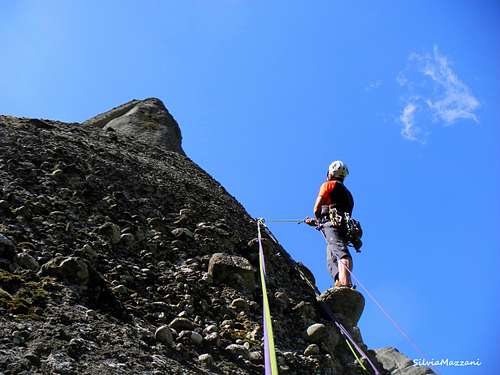
Climbing in Meteora is different! The nature of the rock is very peculiar, the pegs often spaced, especially on the classic routes of the pioneers, every routes ends on a true summit that involves rappels. The magnificent surroundings and the ambience make the climbing at Meteora a singular experience. However, there are also more recent routes with a sporty character, high difficulty and more generous equipment. All the towers and spires in Meteora, even the smallest, have a summit book and as a rule usually have two names (and sometimes plus the English version): the local name in Greek and the German name. The genesis of the German name is explained by the broad activity of East German pioneers. The rock is a gray-brown conglomerate. It is believed that the needles began to form in the Tertiary - about 60 million years ago - starting from the materials deposited at the border of the Thessaly plain when the prehistoric sea waters, which previously covered the plain, withdrew. Slowly the conglomerates needle were then sculpted over the millennia, by water, wind and earthquakes. The texture of Meteora rock results from a mix of pebbles, cobbles and larger stones, packed into a rock surface which is a mixture of conglomerate and sandstone. Sometimes the cobbles have come out from the rock to leave shallow holes in their place. The rock is predominantly solid and reliable. What emerges is a peculiar climbing style, mainly slabby and balancy on cobbles, consisting in exploiting small or large pebbles protruding, or otherwise the holes remained where the same pebbles were formerly located. As soon as you get used to it, the climb will provide fun and generally little tiring.
Nature and climate
The vegetation is considered as supra-Mediterranean, with climax cover of Quercus and Ostrya species and Fagus sylvatica beech forest above 700 m. The area includes forested hills and river valley covered by forests of Platanus orientalis and species such as the endemic Centaurea lactifolia (Centaurea kalambakensi).
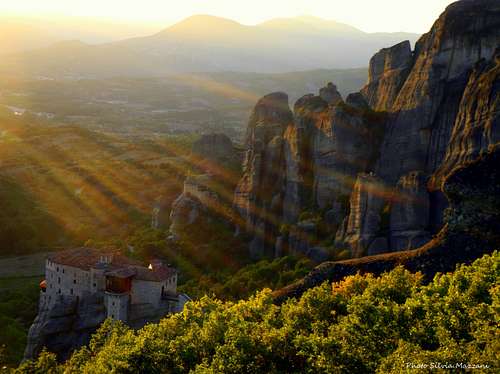

During the summer Meteora is affected by the climate of the tropics, extending its influence into the Mediterranean area and therefore a great heat can be expected, while during the winter the area is influenced by the Central Europe climate, that often produces changes from fair weather conditions to bad weather conditions. Best seasons are the middle ones: Spring till the end of May and early and middle Fall.
When to Climb

In theory it's possible to climb all year round (snowfalls are rare), but summer and winter are less advisable because temperatures may be unpleasant, unless you are very lucky. The best months are March, April, May, September and October. Spring is maybe the best season to climb in Meteora, because the rainy days are rare. Easter time is a very popular time in Meteora and it is probably a bit crowded. Autumn is another good choice until the end of October, when the days should still be moderately warm and dry. Later on, the weather gets more changeable, wet and colder. It is very hot in Summer, but you can still climb in the early morning and late afternoons, or on the walls with a shady location.
Accomodation
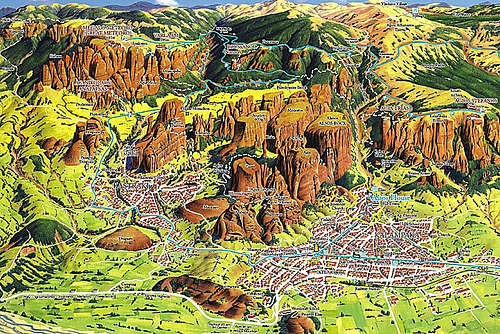
There are a great number of hotels, B&Bs and rooms to rent in the village of Kastraki, the village built in the shadow of the Meteora towers. The nearby town of Kalabaka also features many accomodation choices. There are also three organized campsites, amongst which the nearest one to the crags is the Camping Vrachos in Kastraki. There is also a smaller campsite near the tower of Doupiani. There are plenty of eating out options, particularly tasty traditional Greek food and pizzerias, both in Kastraki and Kalambaka.
Meteo
Guidebooks and maps

“Meteora – Climbing and hiking” by Dietrich Hasse and Heinz Lothar Stutte - I edition 1986, in English and German. It contains around 230 routes. Also, it provides general information about mountaineering, hiking in Meteora, maps, directions.
The second guidebook is:

“Meteora Climbing Part II” by the same Heinz Lothar Stutte and Dietrich Hasse – II edition 2000 – German, Greek and English - Note: the II edition is not a complete guidebook, but an update to the I edition
The Meteora guidebooks can be purchased in Kastraki, Taverna Paradisos or Camping Vrachos. There is also a useful map by the same authors that can be purchased in local shops in Kastraki.
Meteora climbing & Hiking - Guide International. H.L.Stutte, D.Hasse
In Greek, German & English, this is a topo guide to the imposing area of Meteora. Detailed info on routes, gear, hours a route is in the shade & more. Edition II & III are also released.
production: Stutte-Verlag, Postfach 144782504 Wolfratshausen, Germany (tel/fax ++49 89 3511938)
(you can order directly at Stutte-Verlag or www.pizbube.ch)

